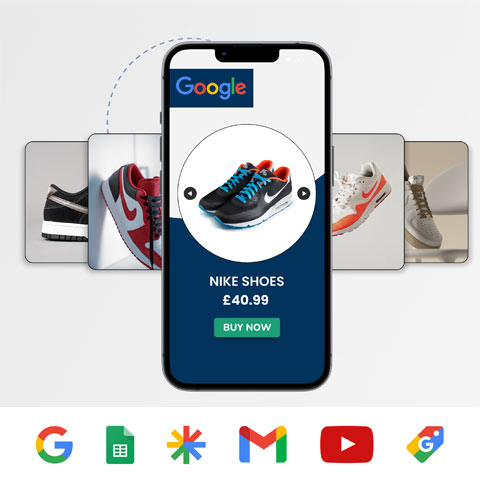Content Commerce - The Emergence of Content Marketing in eCommerce


The simplest definition of content commerce is when a company publishes and distributes content to drive product sales through digital channels such as the online store. However, simply offering content falls short. Content-driven commerce requires that content be strategically integrated into the shopping process to provide customers with the highest quality shopping experience possible.
The entire digital customer journey should be supported by content, from the initial idea, through product selection and purchase, to the use of the product after purchase. Customers must be able to access the content they need at any time and at any digital touchpoint.
Why is content commerce becoming increasingly important?
It sounds banal, but more and more customers are shopping digitally as large parts of customer journeys are moving to digital channels. The closures of local retailers during the COVID-19 pandemic have accelerated this trend.
Manufacturers and retailers need to offer their customers a similar shopping experience online as in brick-and-mortar stores - without personal sales staff and without customers being able to touch and try out products. Online stores as mere product catalogs with a checkout function are not sufficient for this. Only with content - texts, images, videos, interactive elements - can they "recreate" high-quality customer experiences.
The need for advice on technical products, travel or even fashion, for example, is high. Customers have dozens of questions and need assurance that they are making the right decision. Content can provide the answers. In addition, there is a growing demand from customers to be entertained and inspired while shopping, beyond pure information.
Beating ecommerce giants like Amazon or global brands in terms of offering and performance is almost impossible. Many products are interchangeable. However, unique content offers the opportunity to differentiate oneself and to bind customers to one's own brand.
Content types and channels
What types of content can you use to support their customer journeys and provide unique digital customer experiences?
In their own online store or digital channels:
- Product descriptions
- Product data, such as specifications and technical data, prices, delivery data
- Pictures, videos, animations of the product and its application
- Purchase advisors, configurators
- Instructions, FAQs
- User-generated content, such as reviews, testimonials, experience reports
- Blog, editorial articles
- Email newsletter
- Microsites, landing pages
In other, digital channels:
- Social media posts and campaigns
- Affiliate and influencer campaigns
- Test reports, technical articles, PR
- Reviews on portals
- View
What opportunities does content commerce offer?
What do retailers and brands gain from content commerce? What opportunities are there when they invest in content marketing in ecommerce?
High-quality customer experience
Online shopping has hardly been a substitute for shopping with friends, it’s too technical, too boring, and not an experience. And those who needed advice preferred to go to a store with real salespeople.
Through content-driven commerce, retailers and brands can offer their customers better shopping experiences - including advice and excitement.
Learn more about experience driven commerce.
Higher purchase rate
According to various studies, 60 to 80 percent of all online shoppers leave products in the shopping cart and do not complete the purchase. That’s because, shortly before payment, doubts can arise. For example, customers may ask “Is the product really the right one?” The better informed customers feel, the more likely they are to complete the purchase with them.
Lower rate of returns
About one in four products purchased online are returned, according to a SalesCycle study. In some categories, such as fashion, two-thirds of all products ordered end up as returns.
Common reasons are:
-
The product looks different in real life than it does in photos
-
A garment runs larger or smaller than usual
-
Customers realize when they try it out that the product just doesn't meet their expectations.
By providing detailed information, photos and videos, you can prevent your online customers from making the wrong purchase and reduce the number of returns.
Relieving the burden on customer service
Fewer returns also mean less work for customer service, call centers and returns processing. Help your customers use the product after purchase - through content like how-to guides or FAQs - to use the product skillfully and avoid mistakes. Then, fewer problems occur that they have to solve through their customer service.
Differentiation from competitors
Your competitors probably offer similar products to yours or even sell the same range. It's hard to differentiate yourself purely based on what you offer. And offering more customer service than Amazon is hardly possible.
Your content offers one of the few opportunities in ecommerce to truly stand out from the competition. Through the individual style of your content, you can offer customers a unique experience that they can only get from you.
More recommendations
Word of mouth and "asking friends" are important factors in our buying decisions, even in the digital age. But sending a bare link to the online store is no fun. The more unique and entertaining content you distribute, the easier it is for your target groups to recommend you via the messenger app among friends or via social media profiles.
Search Engine Optimization (SEO)
Thanks to Google, YouTube, Pinterest, and more, targeted searches for products or ideas are often the prelude to a buying process. On average, organic traffic accounts for one-third to one-half of all visits to online stores. Through your content, you will be found more often - not only with your online store but with all the channels you use.
Personalization as a success factor
The more content ecommerce companies produce, the greater the risk that customers will be overwhelmed and confused. The secret of content-driven commerce is to present customers with only the content they need at any given time, i.e., personalized content.
The individualized email newsletter was one of the first methods of personalization. Today's ecommerce and content management systems play out individual campaigns, products or informative content to customers. For different groups of customers or even individuals, the store or website looks completely different.
Companies can personalize their content by defining different customer groups and manually assigning customers to these groups, for example, private customers or business customers, male or female customers. Increasingly, algorithms are taking over this task by assigning customers or visitors to segments based on certain characteristics and playing out personalized content. The more data companies have about their customers, the better this works.
The technical implementation of content commerce
As nice as content commerce sounds and as many advantages it has for marketing and sales, the technical implementation is a challenge. In the past, there was a clear "division of labor": The online store manages the products, the content management system manages the website with landing pages, blog and other content. Other systems are additionally connected.
Content-driven commerce requires deep integration of content marketing channels with ecommerce functions. This is almost impossible to implement with disparate or only partially compatible systems.
What makes it so difficult, and what does the solution look like?
Technical challenges
The basic problem is that data and content are distributed in different systems. Each system has its strengths and special functions, making it more or less suitable for certain types of content. For example, product data is managed in the store solution, marketing texts in the content management system, images and videos in digital asset management software, and the data for personalization comes from the analytics software.
All this data has to be "assembled" for a uniform, digital customer experience. This is technically complex if it works at all. Ecommerce managers, marketers, and content authors have to maintain data in multiple places; often twice and three times, for different channels and formats.
Different channels - such as desktop and app - offer different user experiences. Tracking and personalization also do not work across channels.
Implementation with a headless CMS
The best way to implement an integrated content commerce concept is to use a headless content management system (CMS) as the central building block. You connect all data sources to the CMS.
Content authors can work with all data and content as if it were native, existing content in the CMS. They build campaigns and entire content experiences from the content and create variants for personalization.
The content, in turn, can be played out to a virtually infinite number of different front ends and channels. Since all content is controlled by a central system, customers get truly consistent experiences across all channels, and true omnichannel content marketing becomes possible.
Want more like this?
Want more like this?
Insight delivered to your inbox
Keep up to date with our free email. Hand picked whitepapers and posts from our blog, as well as exclusive videos and webinar invitations keep our Users one step ahead.
By clicking 'SIGN UP', you agree to our Terms of Use and Privacy Policy


By clicking 'SIGN UP', you agree to our Terms of Use and Privacy Policy
Other content you may be interested in
Categories
Categories

Want more like this?


Want more like this?
Insight delivered to your inbox
Keep up to date with our free email. Hand picked whitepapers and posts from our blog, as well as exclusive videos and webinar invitations keep our Users one step ahead.
By clicking 'SIGN UP', you agree to our Terms of Use and Privacy Policy





![[Research] Apps: The Secret Engine of Ecommerce Growth [Research] Apps: The Secret Engine of Ecommerce Growth](https://images.bizibl.com/sites/default/files/apps-and-web-similarweb-480.jpg)



